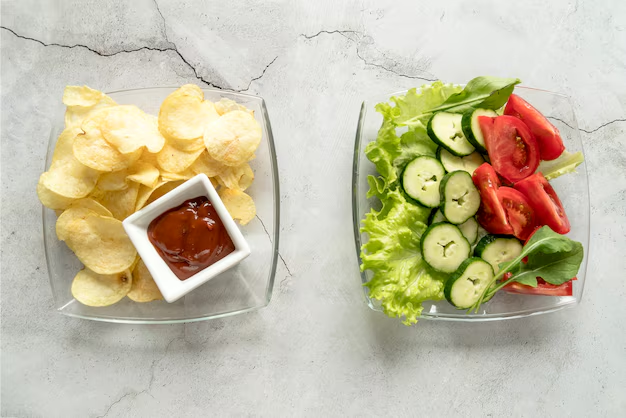What’s the Deal with Your Fridge’s Crisper Drawer? Here’s Everything You Need to Know
Open your refrigerator, and there it sits—a crisper drawer. This often-overlooked component of your fridge might seem mundane, but it plays a critical role in preserving your groceries. Whether you're baffled by its true purpose or keen on optimizing your food storage, understanding how the crisper drawer works can supercharge your kitchen efficiency.
🌟 The Role of the Crisper Drawer
What is a Crisper Drawer?
A crisper drawer, found in virtually all modern refrigerators, is specifically designed to prolong the shelf life of produce by maintaining optimal humidity levels. It helps to keep vegetables crisp, hence the name, as vegetables prefer slightly humid environments. Essentially, it is your refrigerator's boot camp for fruits and vegetables, ensuring they stay fresher, longer.
How Does It Work?
Humidity Control: Crisper drawers usually come with adjustable sliders that let you set the humidity level. The main settings are “high” and “low”:
- High Humidity: Ideal for leafy greens and celery, this setting locks in moisture by restricting airflow.
- Low Humidity: Suited for fruits like apples and pears, this setting allows gases like ethylene, which can hasten ripening, to escape.
By controlling these settings, you can ensure that each type of produce is given the right environment to thrive.
Why It Matters
Keeping foods in their designated crisper drawer doesn't just extend shelf life; it also helps retain taste and nutritional value. Every wasted apple or wilted spinach leaf is less money in your pocket and less nutrition on your plate.
🥗 Maximizing Your Crisper's Potential
Organizing Your Drawer
When it comes to the crisper drawer, the organization is key for maximum freshness. Here’s how to spruce up your storage game:
- Separate Fruits and Vegetables: Given that fruits like apples emit gases that speed up ripening, keep them apart from vegetables, which prefer higher humidity.
- Group Similar Items: Store similar items together. Leafy greens with other leafy greens, and fruits with similar ripening times together.
What Not to Store Here
Not everything belongs in the crisper drawer!
- Avoid Potatoes & Onions: They do better in a cool, dark pantry.
- Bread & Tomatoes: Bread stales faster in the fridge, and tomatoes lose taste and texture when stored too cold.
🔍 Practical Usage Tips
Checking Your Fridge’s Features
Many modern refrigerators boast advanced features that can make storage even more effective. Some offer zoned cooling or dedicated vegetable and fruit drawers.
- Read the Manual: Familiarize yourself with your fridge's specifics to leverage any unique capabilities it might offer.
- Regular Cleaning: Keep drawers clean and free from rotting produce, which can speed up spoilage.
When to Adjust Settings
Sometimes a little tweak can make all the difference:
- Seasonal Changes: Adjust setting based on seasonal produce, turning up humidity for summer's leafy bounty.
- Storage Duration: If you’re storing items for a shorter time, a less critical vigilance toward settings might be sufficient.
🍋 Summary Tips for Quick Reference
Here’s a swift roundup of actionable tips to remember:
- 👩🌾 High Humidity: Ideal for lettuces, spinach, and carrots.
- 🍎 Low Humidity: Best for citrus fruits, apples, and grapes.
- 🚫 Don’t Mix: Separate fruits and leafy veggies.
- 🔄 Seasonal Adjustments: Tweak settings based on what’s in season.
- 🧼 Keep Clean: Regular cleaning maintains freshness and hygiene.
⚖️ Debunking Myths & Misunderstandings
Crisper Drawers Aren't Magic
A common misconception is that placing any vegetable in the crisper drawer will keep it fresh indefinitely. While it helps extend shelf life, prompt consumption is always better for peak flavor and nutrition.
Bigger Is Not Always Better
The noggin-numbing belief that a bigger crisper drawer means better results is void of truth. Size doesn't affect efficiency—humidity does.
❄️ Beyond the Crisper: Exploring Refrigerator Zones
While the crisper is a champion for certain produce, understanding the rest of your fridge's landscape can seriously amplify your food’s longevity.
Main Compartment
- Meat and Dairy: Often stored on the lower shelves where cooling is most consistent.
- Condiments and Juices: Typically stored on the door, which is the warmest area of the fridge.
Freezer Compartment
Some items are best frozen to maintain quality over longer durations, like meats and certain berries.
🌿 Sustainable Storage Tips
Optimal Purchasing Habits
Buying local and in-season produce not only tends to taste better, but it can also last longer, reducing waste.
Composting
When produce inevitably begins to spoil, composting can lessen the guilt of waste and provide nourishment for your garden.
Putting the Knowledge to Use
Step inside a kitchen equipped with the power of crisper drawer knowledge, and you’ll hear the symphony of freshness extend beyond that first bite. Proper usage of your fridge’s crisper drawer ensures your food stays fresh longer, saving you money and maximizing flavor and nutrition. Embrace this seemingly small change for an outsized life impact.
